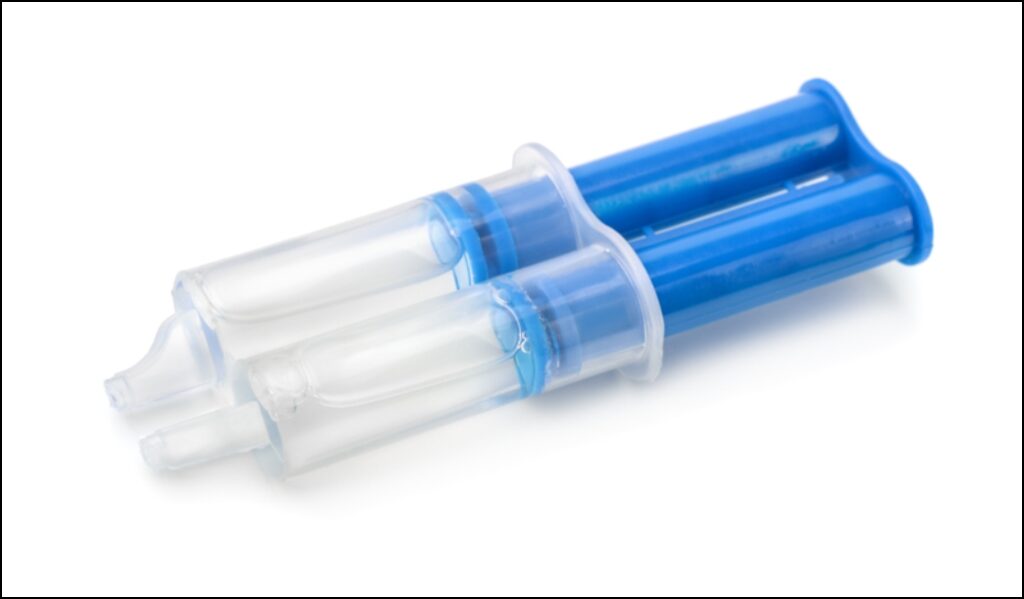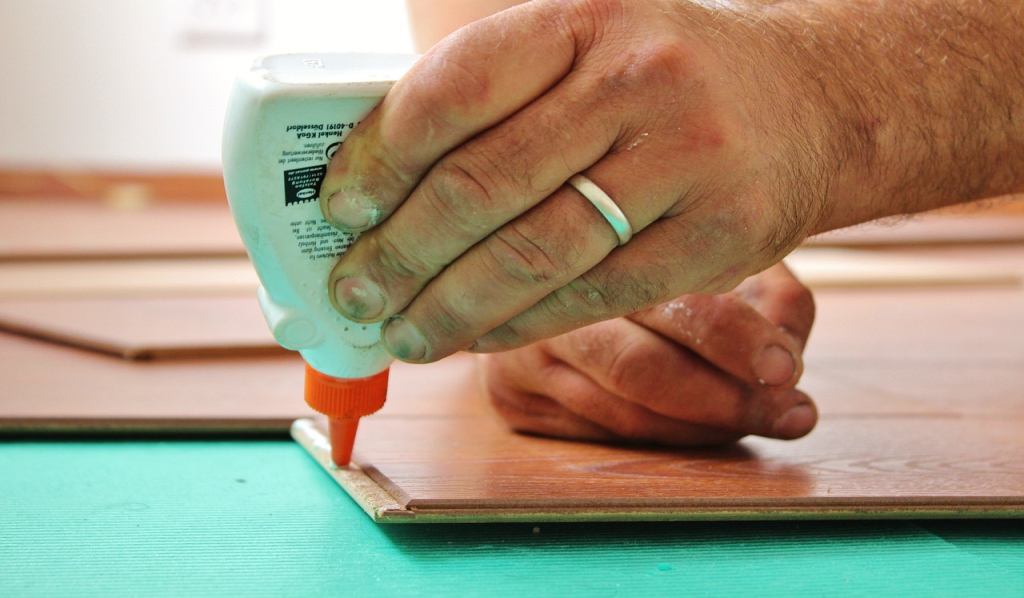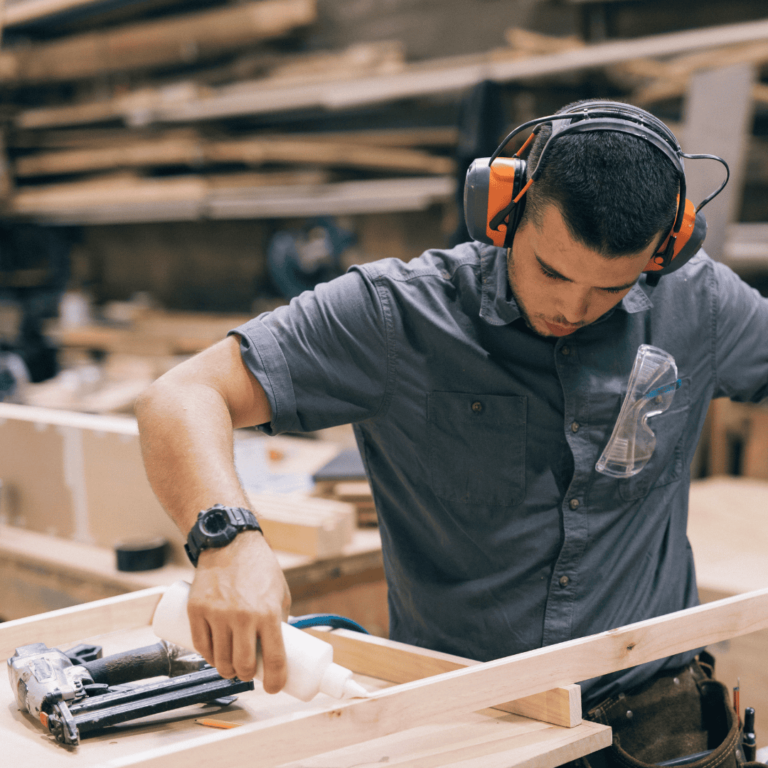Constructing toilet partitions that truly inspire requires commitment to quality and attention to detail. Part of the process includes utilizing a range of adhesives, but not every adhesive is the same, and each has its pros and cons. It is important to understand how to properly utilize each type to maintain the standard of quality and longevity required of a commercial toilet partition.
Different Types of Adhesives
Different types of adhesives are used in various applications, each with their own unique properties and advantages. For example, Polyurethane reactive (PUR) adhesives offer strong, durable bonds while contact adhesives may have limited working times.

As all adhesives are not created equally, familiarity with the types available and their strengths and weaknesses is important to quality assurance and customer satisfaction.
Adhesive Comparison
Polyvinyl Acetate (PVA) Adhesives
These are water-based adhesives used for bonding porous materials such as wood, paper, and fabric. Considered one of the most environmentally friendly adhesive type.
Pros
- Easy to apply and clean up using water.
- Dries clear and provides a strong bond.
- Low odor and non-flammable.
Cons
- Not suitable for bonding non-porous materials like metal or plastic.
- Can be affected by extreme temperatures, both during application and once cured.
- Longer curing time compared to instant adhesives or hot melt adhesives.
Polyurethane Reactive (PUR) Adhesives
This type of adhesive forms strong, durable bonds and has high temperature and chemical resistance. It is popular in manufacturing for the wide variety of materials it can be used with.
Pros
- Excellent water and moisture resistance.
- Suitable for a wide range of materials.
- Cures at room temperature.
Cons
- Relatively long curing time (4-7 days for full cure).
- Can be messy and difficult to clean when fully cured.
- Requires moisture for curing, which can be affected by ambient humidity.
Contact Adhesives
Contact adhesives form an instant, strong bond when two surfaces coated with the adhesive are brought together under pressure.
Pros
- Instant, strong bond on contact.
- Suitable for bonding laminates, veneers, and edgebanding materials.
- Easy to apply using a spray gun.
Cons
- Limited working time due to instant bonding.
- May require specialized application equipment.
- Challenging to reposition pieces due to instant bonding.
Epoxy Adhesives
A two-part adhesive system that requires a resin and hardener to mix in order to activate. There are a wide range of formula variations that have very specific use cases for each.
Pros
- High strength and durability.
- Excellent chemical and heat resistance.
- Suitable for bonding a wide range of materials.
Cons
- Requires precise mixing of two components.
- Limited working time once mixed.
- Can be visible if squeeze-out occurs.

Wood Glue
Specifically designed for bonding wood materials together. Popular due to its strong bonding properties and ease of use.
Pros
- Specially formulated for wood.
- Smooth consistency that allows for even coverage on wood surfaces.
- Can be cleaned up easily with water before it dries.
Cons
- Limited to wood.
- Has to be cured under pressure.
- Has specific temperature ranges for application and curing.
Super Glue
Also known as cyanoacrylate adhesive; it is a fast-acting, strong bonding adhesive that can be used on a variety of materials. It is popular for its quick-setting properties and ability to form strong bonds with minimal surface contact.
Pros
- Sets and bonds quickly, typically within seconds.
- Forms strong, durable bonds on a wide range of materials.
- Most super glues are solvent-free.
Cons
- The bonds formed by super glue can be brittle.
- Requires moisture to cure properly.
- Can be difficult to remove from surfaces without the use of solvents or force.

Hot Melt Adhesives
One of the more common adhesives used in machine applications, hot melt adhesives are great for fast setting applications and can be used with a wide variety of different materials.
Pros
- Fast setting, typically within 30 seconds to 3 minutes.
- Good initial bond strength.
- Suitable for quick assembly applications.
Cons
- Limited heat resistance due to thermoplastic nature.
- Can be difficult to clean or remove excess adhesive.
- Requires heated application equipment.
How Each Adhesive Application is Determined
Factors such as the material, manufacturing method, environment, time constraints, required bond strength, and quality of finished product all influence adhesive choice.
There is no one size fits all solution, one adhesive could be good for machine edgebanding a panel, but that does not make it the right type to use on the face of the panel when bonding laminate to particle board. A single toilet partition component can have multiple types of adhesives.
All the production methods utilized in Ironwood Manufacturing’s products, including the Element series have gone through a rigorous quality assurance and testing phase to ensure all methods enhance the integrity and quality of the final product.
By carefully considering the properties of each adhesive, and its compatibility with the materials being bonded, beautiful toilet partitions can be made to last.
